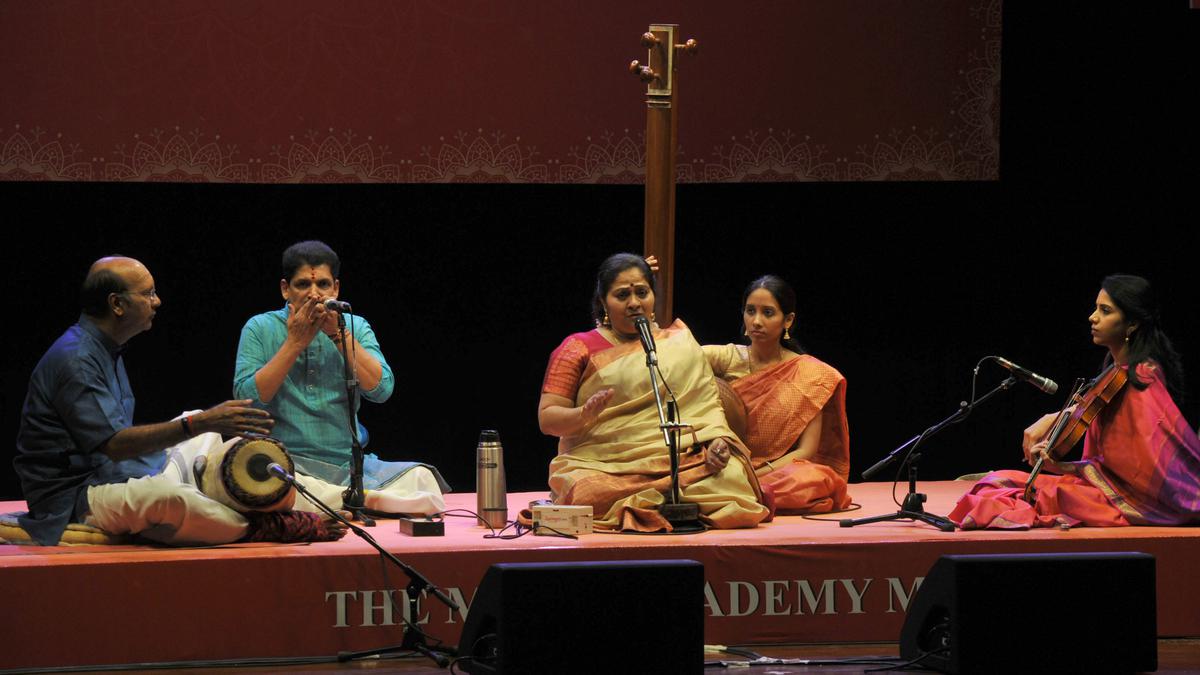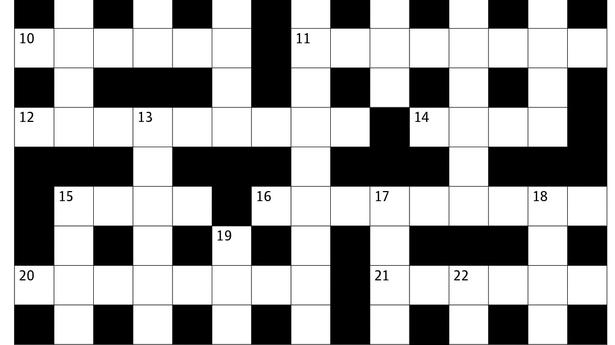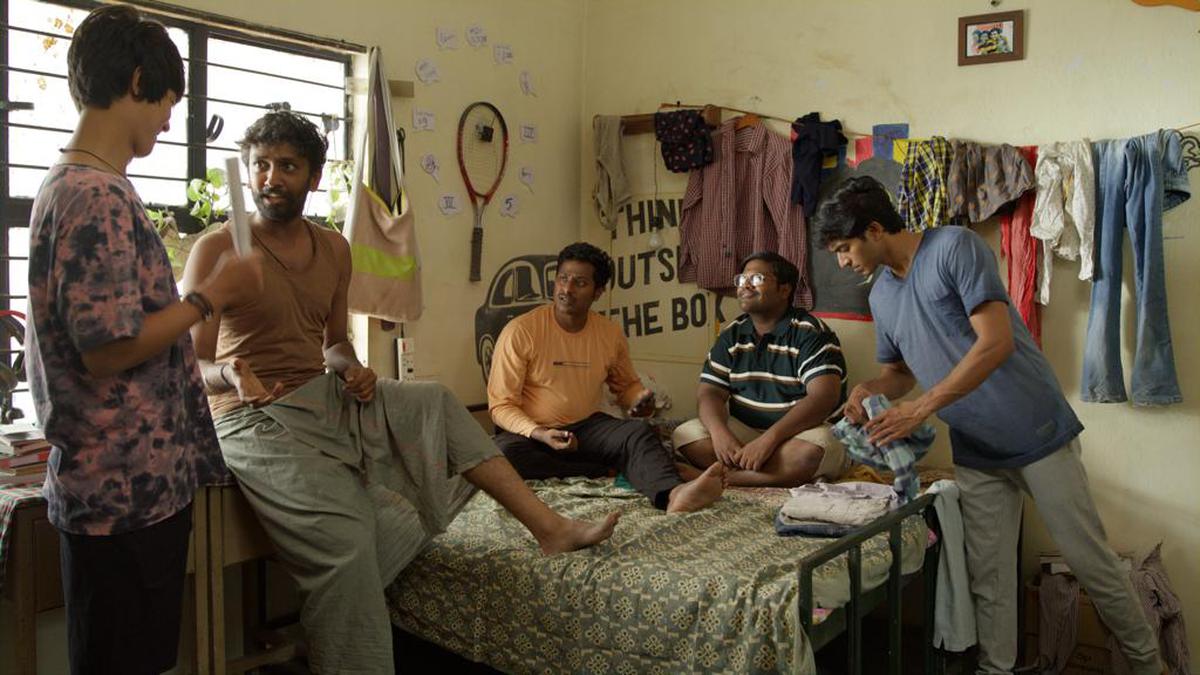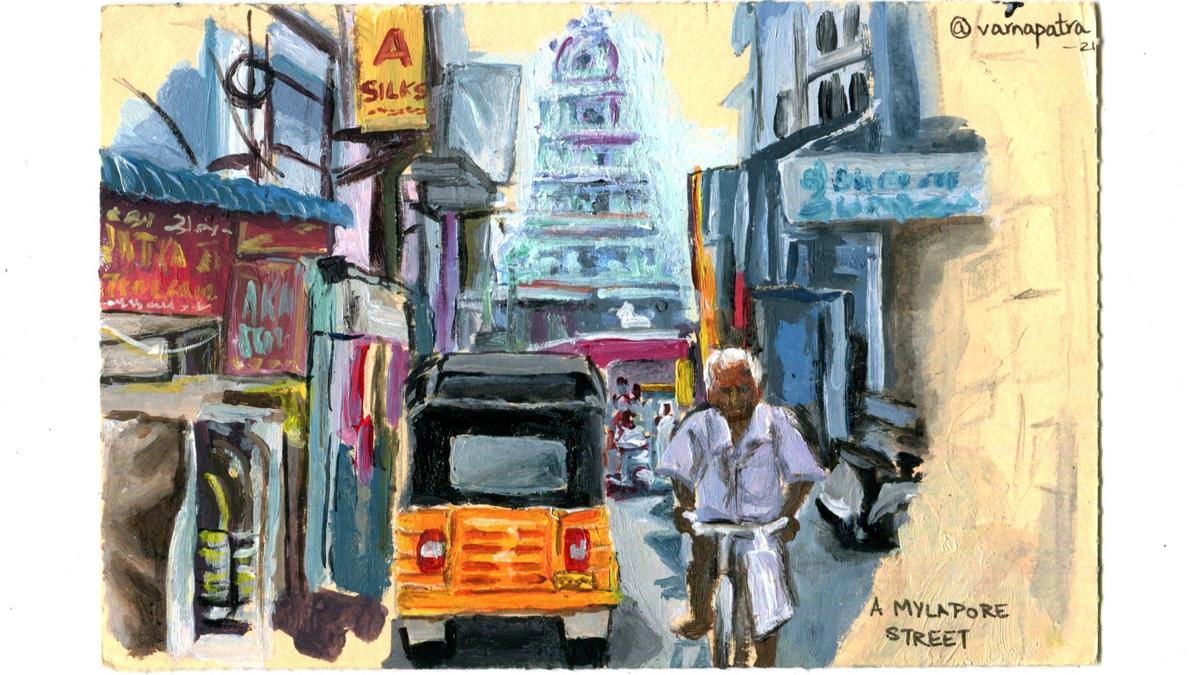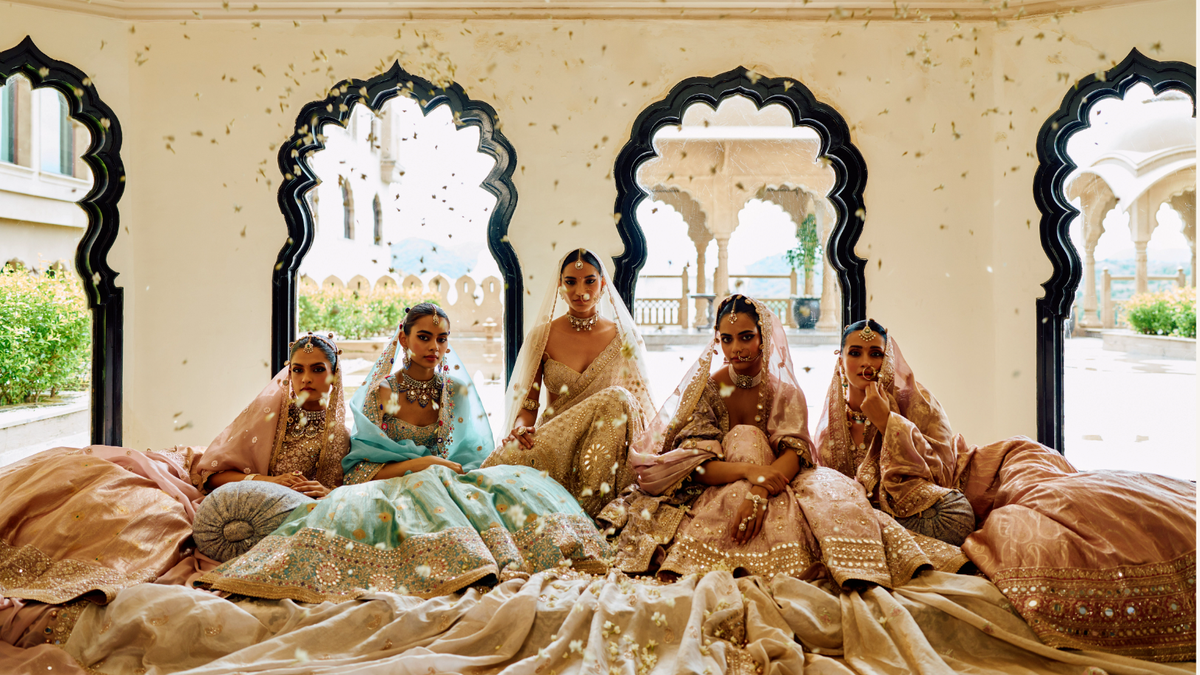Sowmya with Charumathi Raghuraman with Neyveli Narayanan and K.V. Gopalakrishnan
| Photo Credit: S. Thanthoni
A programme list is never a sufficient indication of the quality of a concert, especially if it is of a creative artiste like Sowmya. The artistry was evident in every aspect — alapana, niraval, swara nuances, apt laya tricks and flashes of sangathis. These differentiate an enlightened concert from a good one, and that was what Sowmya adopted for her concert at the Music Academy.
After the Saranga varnam, ‘Intha modi’, a bright ‘Vadera deivamu manasa’ (Tyagaraja, Pantuvarali, Adi) was peppered with a micro-sangathi stream for the charanam line, ‘Datru vinuthudai’ and engaging swara patterns at ‘Pradyota’ chosen for its awkward, and therefore, more challenging place in the tala. No place for placid swara singing in Sowmya’s dictionary. Charumathi Raghuraman on the violin got into the flavour of the concert early with her swara responses.
The elaboration of the Natabhairavi alapana was more technical than aesthetic but the descent was crafted with taste. Muthiah Bhagavatar’s ‘Nee padamula nammithi ni’ on goddess Kanthimathi is not often heard. Sowmya’s niraval at ‘Gopala sodari gowri’ reinforced the many shades of the raga, which has melakarta status, but suffers from platform neglect. Many swarakshara uses with ‘ri’ and ‘ni’ were a clever icing. The raga alapana by Charumathi was also beautiful with an easy style and optimised kalapramana.
Rich tapestry
Then followed two substantive kritis — ‘Ekambresa nayike’, Karnataka Suddhasaveri by Dikshitar and ‘Senthil andavan’, Karaharapriya by Papanasam Sivan, Rupakam. Perhaps Sowmya’s idea was to induce a rich tapestry feel, even in a shorter duration. Both the kritis were rendered with aplomb.
Kannada raga alapana had many tinges of elegance, chiefly around the swaras ‘ga ma da’ and some just around ‘da’. With the right emphasis and context, such uses are embellishing. Sowmya’s absolute clarity in brief rapid akaras is worth a closer look by youngsters. Charumathi’s four-minute alapana enveloped a full sweep of all things nice about Kannada. ‘Bhajare bhaja manasa’ by Tyagaraja (Mishra Chapu) fitted the mood perfectly. Swaras at ‘Bhusama shantham’ had further evidence of thoughtful approach to singing, responded very competently by both Charumathi and Neyveli Narayanan (mridangam). Of late, swara segments have become mechanical and loud and the contrast was welcome. The percussionists get a raw deal in a short concert, having to curtail a gradual build-up to their tani avartanam, but veterans Narayanan (mridangam) and K.V. Gopalakrishnan (kanjira) used all their skills to make it count, including in the multi-nadais.
The emotive ‘Madhava maya manava roopa’ in Hamsanandi constituted the short tukkada phase. It is perhaps a good concept to fill a short concert of this nature with regular kritis in the middle, as Sowmya did, (than the customary volley of tukkadas at the end), to give the fullness of a concert. Charumathi Raghuraman’s understated presence was more than counterweighed by the display of her immense talent across a spectrum of manodharma situations. She also has the gift of ‘trade-off judgment’ between the length of playing and creating aesthetic impact.


